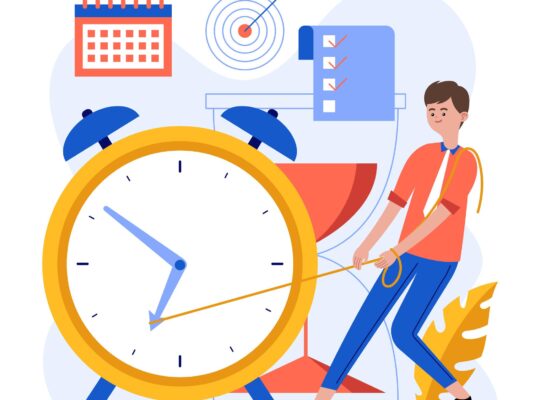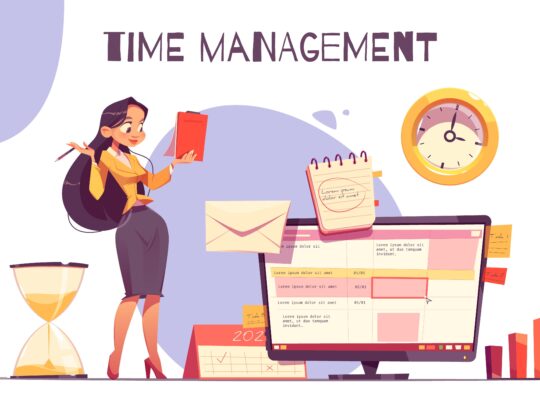| Time Management Tips: Communication | ||
| Instructor: Dave Crenshaw | ||
| Released: 11/27/2019 | Course Details 44m Beginner | |
| Skills Covered Interpersonal Communication Time Management | Course Link | |
| Professional Certifications and Continuing Education Units (CEUs) Project Management Institute – PDUs: 0.75 hour National Association of State Boards of Accountancy (NASABA) – CPE: 1.4 | ||
| The Time Management Tips series was designed to help professionals boost their productivity, get things done, and find more time for what’s most important. In this installment, productive leadership author and speaker Dave Crenshaw focuses on the key tenets of communication, sharing bite-sized tips that can help you strengthen your relationships with coworkers—and maximize your time in the process. Learn strategies for establishing realistic expectations, handling meetings or conversations that run long, and responding to quick questions. Plus, discover how being kind improves productivity, what to do when someone multitasks while speaking to you, and how to keep texting from being a distraction. Learning objectives – Explain how you should respond when your boss asks you to finish something ASAP. – Identify the best way to approach the end of a meeting when the time schedule for the meeting is nearly gone. – List the details that should be present in a well-worded voicemail message related to a task at work. – Identify the most productive use of text messaging at work. – Explain how you can use a portable inbox to manage business cards you receive. Source: LinkedIN Learning | ||
Communication Tips
Give people your attention
Effects of Multitasking
- Things take longer
- You make more mistakes
- You increase stress levels
- We communicate to people that they’re unimportant
- Focus on the person.
- Create a schedule.
- Remove distractions.
- Always make eye contact.
Responding to quick questions
The distraction of “can I ask you a quick question”
To avoid:
- “Can it wait until our one-one-one?”
- “Is this better handled via email?”
- “Is this better handled in a separate meeting?”
- “What is the question?” – if the answer is NO to the three previous questions.
By asking these questions you will start to train yourself and others to think more productively about time management.
What to say instead of ASAP
ASAP means nothing and everything at the same time, it’s not clear communication. Does ASAP mean to complete within the hour, day or week? The interpretation is up to the receiver.
Instead, set a clear deadline for tasks.
Make time to build relationships
Take the time to build strong relationships, not only at work but in your personal life as well. Some researchers call this the work-home resources model.
Make spending time with loved ones a priority.
Staying engaged in conference calls
- Establish expectations early. – what is this meeting about and who needs to attend.
- Make a commitment in your schedule. – don’t overbook and no multitasking
- Check your equipment – avoid using a speakerphone, use a headset
- Turn off distractions.
- List the names of attendees – in the notes in the meeting minutes
- End with an action.
At the end of ever meeting
- What’s the next action step?
- Who will take that action?
- When will they do it?
Meetings and conversations that run long
- Establish the expectation in advance – hard stop
- Schedule meeting for 50 minutes to allow time to transition to the next meeting
- Say something – point out the meeting is running out of time
- A few minutes before the end of the meeting, review the actions needed
- Offer to schedule another meeting – if necessary
How being kind improves productivity
Our brains are naturally built for a flight or fight when faced with conflict. Respect and kindness facilitate better work and faster work. A recent study identified that happy workers were 12% more productive and unhappy workers were 10% more unproductive.
Set voicemail expectations
- Consider how often you check messages.
- Create a corresponding voicemail message.
Change from the stressful structure of now to the structure of when.
Leaving an effective voicemail message
- Who? – identify who you are
- Why? – explain the reason for the call
- When? – Indicate when they should get back to you
- What? – State the action you want them to take
Voicemail Transcription
- Diction
- Rate of Speech
What do do when someone is multitasking on you
- Set a positive example – turn off electronic devices and set them aside
- Stop – stop talking, stop trying to do anything, just wait
- Workplace Multitasking Training might also be helpful
What to do about unsolicited phone calls
- Join a “do not call” list.
- Use a caller ID service.
- Communicate what calls to screen.
Using text messaging productively
- Use texting when you need quick information.
- Use texting in emergency situations.
Move from the “culture of now” to the “culture of when”.
Stop message interruptions
Avoid interruptions
- Designate an emergency channel.
- Let trusted people know your preferred method
- Create a schedule for each application
- Email – turn off all notifications. Check three times a day.
- Text – turn off sounds/vibrations. Check every hour.
- Messaging app – leave emergency notifications on. Talk with those who abuse it.
- Social media – turn off all notifications. Send notifications to email for high priority apps.
- Voicemail – turn off all notifications. Send notifications to email.
Make phone calls more productive
Phone Communication
- Give others your full attention.
- Schedule your phone calls.
- Mitigate all distractions.
- Note action items.
What to do with business cards
“Which gathering point am I going to put this business card into?”
Gathering Point
A place to gather unprocessed items.
Portable inbox or Digital notebook
What, when, where processing needs to occur next.
| Remember! To experience the full benefit of this guide, I highly recommend you watch the full training session. |






